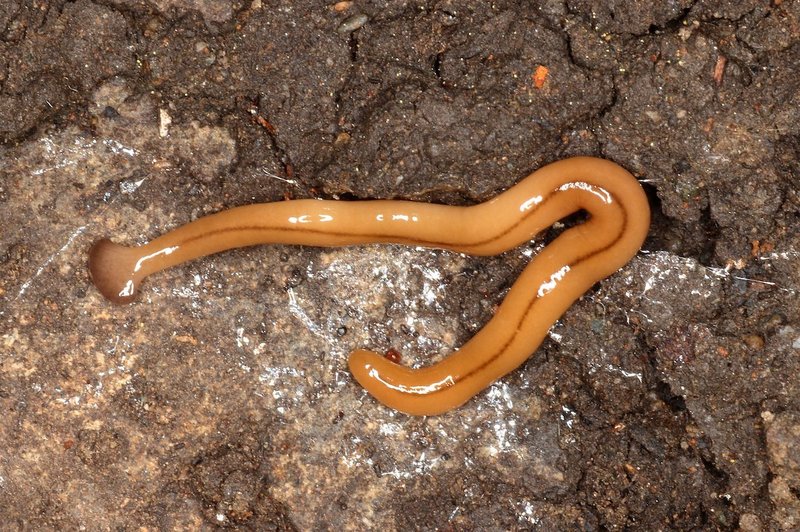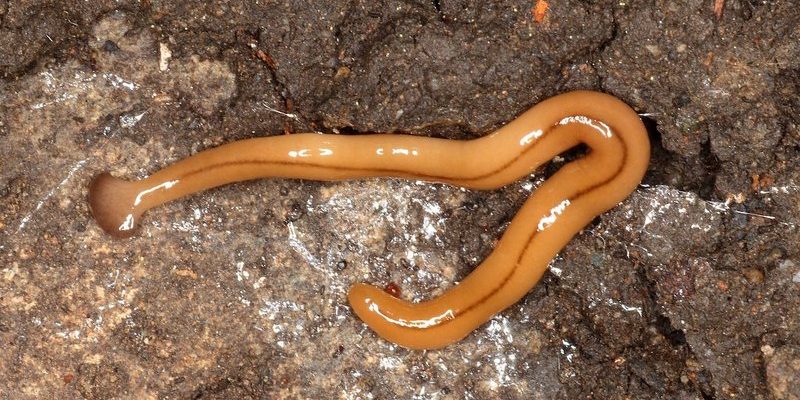
Let’s dive into some effective natural strategies you can implement to keep hammerhead worms at bay. From planting specific types of vegetation to introducing helpful predators, there are plenty of eco-friendly ways to protect your garden. This isn’t just about saving your greens; it’s about creating a balanced ecosystem where every critter has its place. And trust me, with these approaches, you can keep your garden flourishing while reducing those pesky worm numbers.
What Are Hammerhead Worms?
Hammerhead worms, scientifically known as **Bipalium** species, are fascinating but problematic creatures. These worms can grow quite large, sometimes reaching up to a foot long, with a distinct hammer-shaped head that gives them their name. They predominantly thrive in warm, humid environments, making gardens a perfect habitat.
You might be wondering why they’re such a big deal. Well, hammerhead worms are carnivorous, primarily feeding on other soft-bodied invertebrates like earthworms. This predatory behavior can significantly disrupt your garden’s ecosystem. If you let them roam freely, those beneficial worms you rely on for soil health and aeration might disappear.
Natural Plots: Creating a Hostile Environment
One of the first steps in reducing hammerhead worm numbers is to create a less inviting environment for them. These worms prefer moist, shady conditions. By strategically changing your garden layout, you can make it less hospitable.
- Increase Sunlight: Trim back overgrown plants and trees that might be providing shady retreats.
- Improve Drainage: Ensure there’s proper drainage in your garden beds to keep the soil drier, which they dislike.
- Adjust Mulching: Use a lighter mulch that allows moisture to evaporate more quickly.
Think of it like adjusting the thermostat in your house. If it’s too hot or cold, you’re going to feel uncomfortable. The same goes for these worms; they’ll skedaddle if their favorite conditions aren’t present.
Planting Barrier Crops
Another effective strategy is to plant **barrier crops** that naturally deter hammerhead worms. Certain plants have qualities that make them less appealing or even harmful to these worms.
- Tagetes (Marigolds): These vibrant flowers are known for their pest-repelling properties. They can help keep hammerhead worms and other garden pests away.
- Garlic or Onions: Both of these plants have strong odors that many pests dislike, including hammerhead worms.
- Mint: A fragrant addition to your garden, mint is invasive but can deter unwanted guests when planted around the edges.
By incorporating these plants, you’re not just decorating your garden; you’re creating a natural defense system that makes it harder for those pesky worms to thrive.
Introducing Natural Predators
Nature has a way of balancing itself, and one of the best ways to combat hammerhead worms is by bringing in their natural predators. This tactic not only reduces their population but also enhances your garden’s biodiversity.
One of the most effective predators is the **nematode**, a microscopic roundworm that specifically targets hammerhead worms. When you introduce beneficial nematodes into your soil, they can seek out and destroy hammerhead worm eggs and adults.
You might be wondering how to use nematodes effectively. It’s simple! Just purchase them from a garden center or online, and follow the instructions for mixing and applying them to your garden soil.
Maintaining a Clean Garden
Keeping your garden clean and tidy is vital in preventing hammerhead worm infestations. Did you know that these worms thrive in decaying organic matter? This includes dead leaves, twigs, and other debris.
To maintain a healthy garden, consider the following practices:
- Regular Cleanup: Make it a habit to regularly remove any fallen leaves or plant material.
- Composting Wisely: If you compost, ensure it’s well-aerated and turned frequently. A healthy compost pile can help break down materials swiftly, reducing hiding spots.
- Crop Rotation: Change where you plant your crops each season. This disrupts the life cycle of pests like hammerhead worms.
By creating a clean environment, you’re taking a proactive approach to managing a potential hammerhead worm problem before it even starts.
Using Natural Repellents
If you’re looking for a more direct approach, consider using natural repellents. Some substances can help keep hammerhead worms at bay without harming beneficial garden creatures.
Try mixing **diatomaceous earth** with water and spraying it in areas where you often see these worms. This natural powder, made from fossilized algae, can dehydrate and harm soft-bodied creatures like hammerhead worms.
Another option is using a simple soap solution. Mixing mild soap with water can create a barrier that deters the worms. Just be cautious: you don’t want to harm your plants, so make sure to test it on a small area first.
Monitoring and Adjusting Your Strategies
It’s important to regularly monitor your garden for signs of hammerhead worms. Take a stroll through your plants and check for any slithering intruders. Keeping an eye out helps you catch infestations early, allowing you to take action quickly.
You might find that some methods work better than others based on your specific environment. Maybe your nematodes are thriving, but the marigolds aren’t as resilient. Don’t be afraid to mix and match strategies until you find what works best for you.
Remember, gardening is a learning process. The more you observe and adapt, the more successful you’ll be in keeping hammerhead worms at bay.
Closing Thoughts
Reducing hammerhead worm numbers in your garden doesn’t have to be a daunting task. With the right natural plots and strategies in place, you can maintain a thriving ecosystem while keeping these troublesome pests in check. Whether it’s through creating a less inviting environment, planting barriers, or introducing predators, each small action contributes to a healthier garden.
So, grab your gardening gloves and start implementing these natural strategies. Your plants—and the critters that help them grow—will thank you for it. After all, a balanced garden is not just beautiful; it’s a thriving sanctuary for all kinds of life. Happy gardening!

